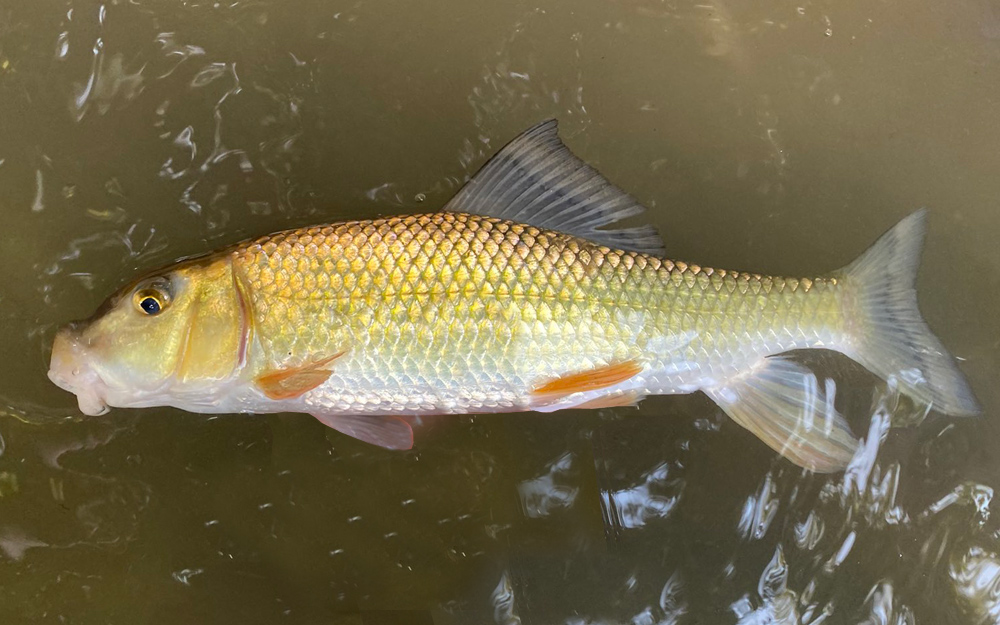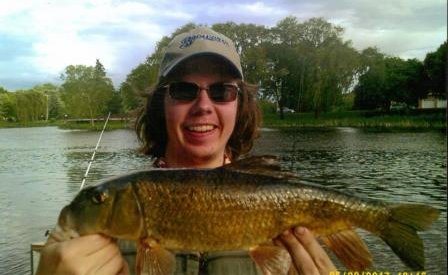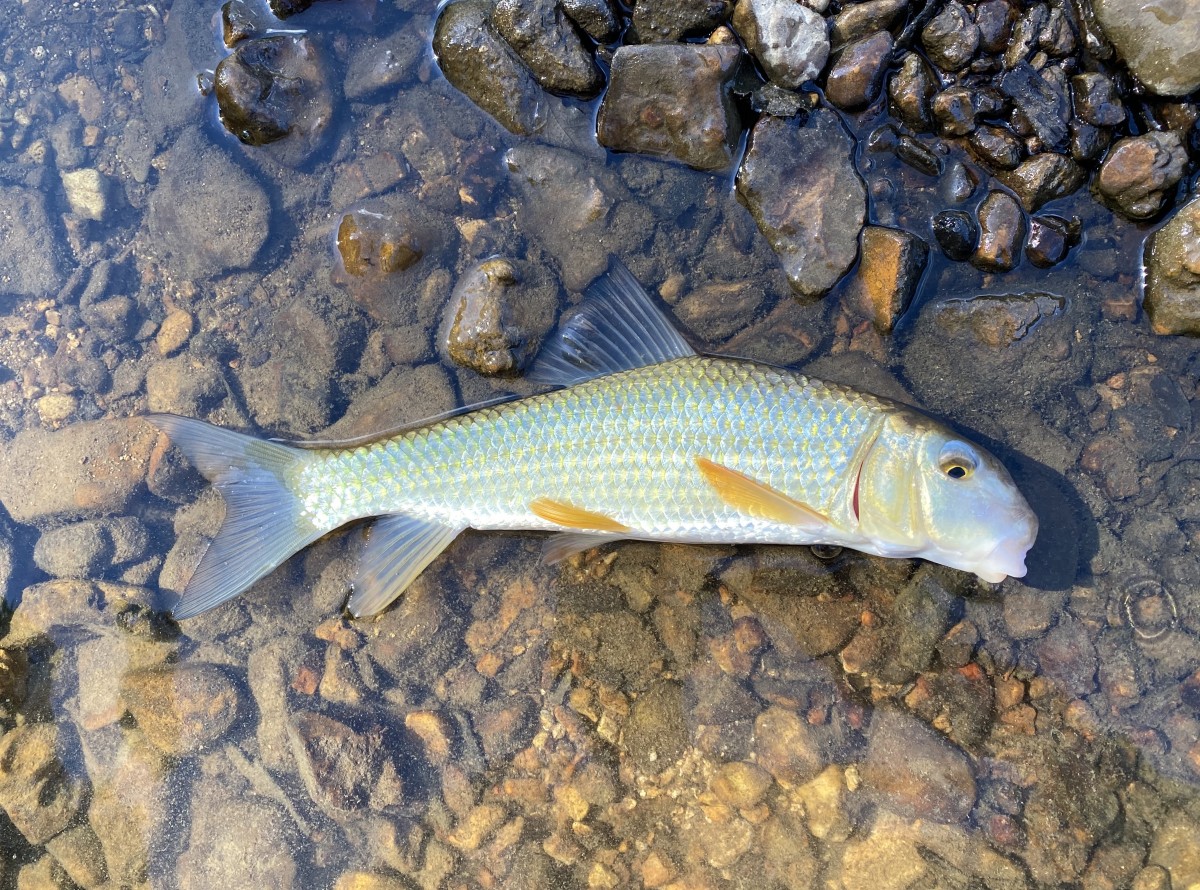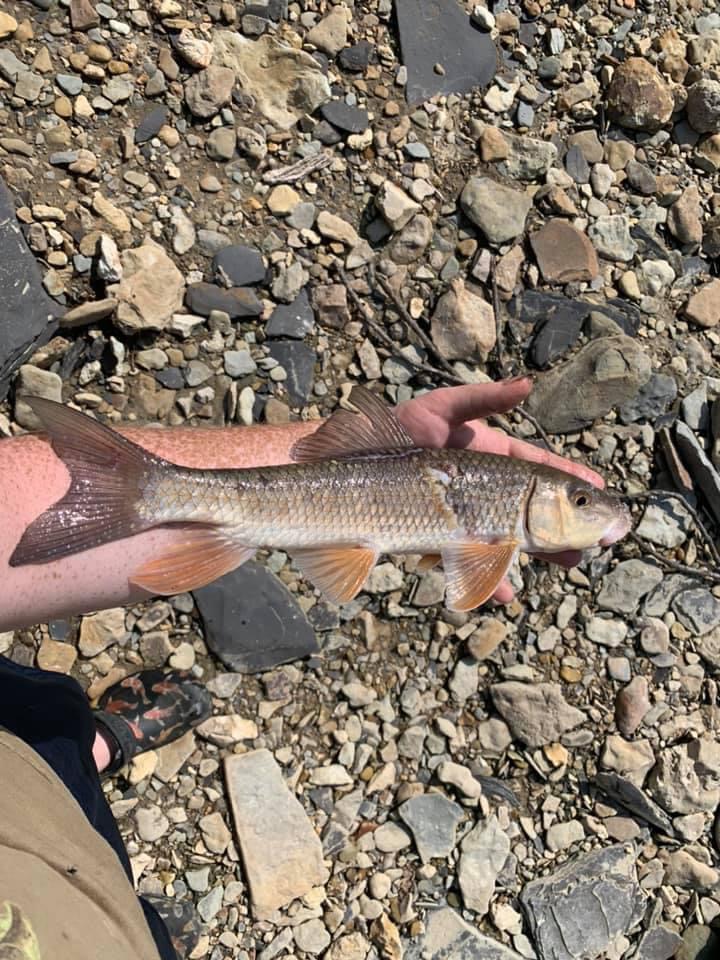Golden redhorse
(Moxostoma erythrurum)

Classification
General data
The golden redhorse, Moxostoma erythrurum, is a species of freshwater fish endemic to Ontario and Manitoba in Canada and the Midwestern, southern, and eastern United States. It lives in calm, often silty or sandy waters in streams, small to large rivers, and lakes.
A bottom-feeder, it feeds on microcrustaceans, aquatic insects, detritus, algae, and small mollusks. The golden redhorse spawns in the spring.
Geographic distribution
The golden redhorse can be found in freshwater habitats across 25 different states in the eastern half of North America. There are populations located in the drainage basins of the Mississippi River, Ohio River, and the lower Missouri River. The fish can also be found in the Great Lakes, excluding Lake Superior, and the Lakes basin, as well as in the Lake of the Woods. The Mobile Bay drainage basin in the states of Alabama, Georgia, and southeastern Tennessee also contains the golden redhorse.
In Mississippi there is an isolated population in the southwestern part of the state. Some suspect that it is a relict population, meaning the range of the fish was once much larger than it is today. They were introduced into the Potomac River in Maryland, Virginia, and West Virginia, but the date of this introduction is unknown. A golden redhorse was seen in this river in 1953, but was never seen there again until 1971.
In Canada, the golden redhorse is endemic to Manitoba and Ontario. The fish can be found in the Red River of the North, a river that eventually empties into Hudson Bay. Coincidentally, the Red River in Texas also houses the golden redhorse.
Physical characteristics
Golden redhorses average around 12-18 inches long and weigh between 1-2 pounds, although some can reach up to 26 inches and 4-5 pounds. The golden scales decorating its sides gave the fish its name. They have olive colored backs, white bellies, and slate gray tail fins. Their body is fusiform in shape, allowing them to fight against currents in streams to capture their prey. The mouth of the fish is in the inferior position. The dorsal fin is slightly concave and the caudal fin is notched. It has a single anal fin and paired pelvic and pectoral fins. The pelvic fins are in the abdominal position, while the pectoral fins are located in more of a thoracic position. It has a lateral line system consisting of 39 to 42 scales which is used to detect movement and vibrations in the surrounding water.
















